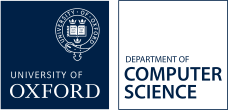Linear Algebra: 2016-2017
Lecturers | |
Degrees | |
Term | Michaelmas Term 2016 (24 lectures) |
Overview
This is a first course in linear algebra. The course will lay down basic concepts and techniques of linear algebra, and provide an appreciation of the wide application of this discipline within the scientific field.The course will require development of theoretical results. Proofs and consequences of such results will require the use of mathematical rigour, algebraic manipulation, geometry and numerical algorithms.
The course will provide insight into how linear algebra theorems and results, sometimes quite abstract, impinge on everyday life. This will be illustrated with detailed examples.
Learning outcomes
At the end of this course the student will be able to:
- Comprehend vector spaces and subspaces.
- Understand fundamental properties of matrices including determinants, inverse matrices, matrix factorisations, eigenvalues and linear transformations.
- Solve linear systems of equations.
- Have an insight into the applicability of linear algebra.
Synopsis
-
Lectures 1-3 Vectors: Vectors and geometry in two and three space dimensions. Algebraic properties. Dot products and the norm of a vector. Important inequalities. Vector spaces, subspaces and vector space axioms. Application examples.
-
Lectures 4-6 Independence and orthogonality: Linear independence of vectors. Basis and dimension of a vector space. Orthogonal vectors and subspaces. The Gram-Schmidt algorithm.
-
Lectures 7-9 Matrices: Column and row space. Range and null space. Rank of a matrix. Matrix operations. Determinant and inverse. Elementary matrices. Application examples: population growth and finite linear games.
-
Lectures 10-12 Systems of linear equations: Examples of linear systems. Gaussian elimination and pivoting. Row echelon form. Elementary matrix factorisations. Application examples: network analysis and global positioning systems. Problems arising from solving linear equations on a computer.
-
Lectures 13-15 Linear transformations: Definition and examples. Properties and Composition of linear transformations. Rotations, reflections and stretches. Translations using homogeneous coordinates. One-to-one and onto transformations.
- Lectures 16-19 Eigenvalues and eigenvectors: Definition. Similarity and diagonalization. Population growth revisited. Systems of linear differential equations.
- Lectures 20-21 Iterative methods for solving linear equations: The methods of Jacobi, Gauss-Seidel, successive over relaxation, and steepest descent. Error analysis.
Syllabus
- Vector spaces and subspaces
- Matrices
- Inverse matrices
- Iterative methods
- Linear transformations
- Solution of linear systems
- Eigenvalues and eigenvectors
Reading list
- Introduction to linear algebra (3rd Edition), Gilbert Strang, Wellesley-Cambridge press.
Taking our courses
This form is not to be used by students studying for a degree in the Department of Computer Science, or for Visiting Students who are registered for Computer Science courses
Other matriculated University of Oxford students who are interested in taking this, or other, courses in the Department of Computer Science, must complete this online form by 17.00 on Friday of 0th week of term in which the course is taught. Late requests, and requests sent by email, will not be considered. All requests must be approved by the relevant Computer Science departmental committee and can only be submitted using this form.
